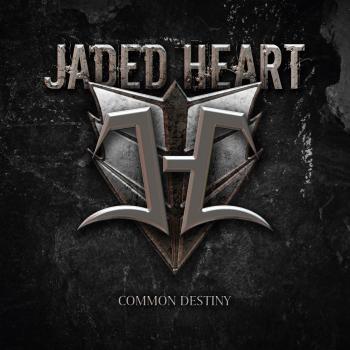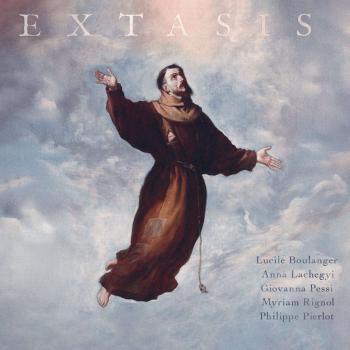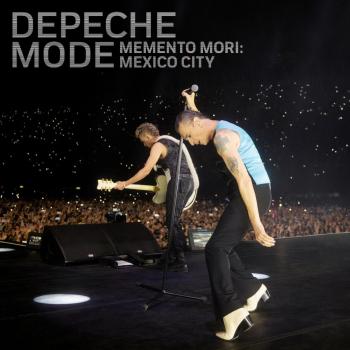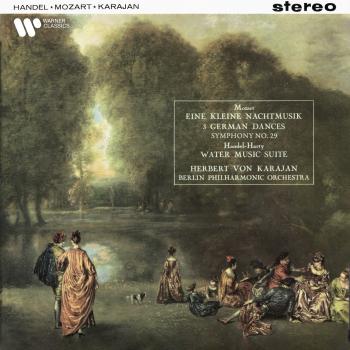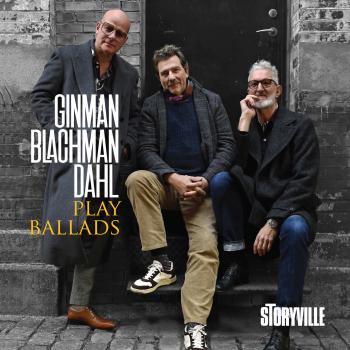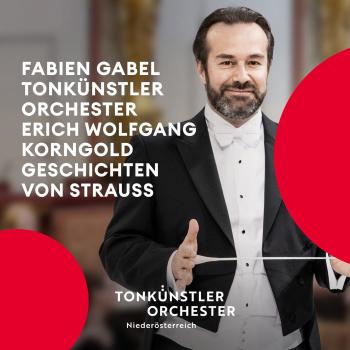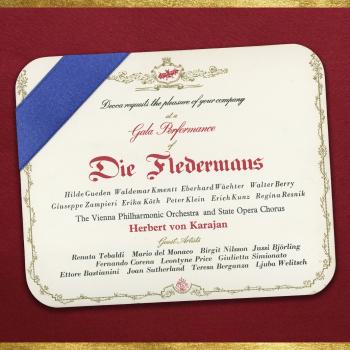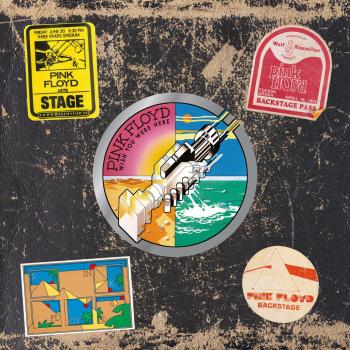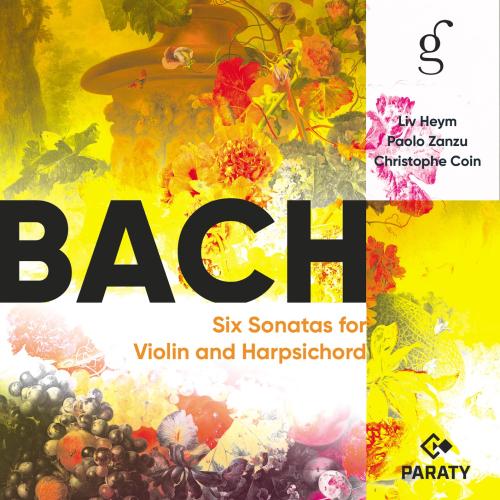
Bach: Six Sonatas for Violin and Harpsichord Liv Heym, Paolo Zanzu, Christophe Coin
Album Info
Album Veröffentlichung:
2025
HRA-Veröffentlichung:
11.04.2025
Label: Paraty
Genre: Classical
Subgenre: Chamber Music
Interpret: Liv Heym, Paolo Zanzu, Christophe Coin
Komponist: Johann Sebastian Bach (1685-1750)
Das Album enthält Albumcover Booklet (PDF)
- Johann Sebastian Bach (1685 - 1750): Sonata No. 1 in B Minor for Violin and Harpsichord, BWV 1014:
- 1 Bach: Sonata No. 1 in B Minor for Violin and Harpsichord, BWV 1014: I. Adagio 03:24
- 2 Bach: Sonata No. 1 in B Minor for Violin and Harpsichord, BWV 1014: II. Allegro 03:14
- 3 Bach: Sonata No. 1 in B Minor for Violin and Harpsichord, BWV 1014: III. Andante 02:48
- 4 Bach: Sonata No. 1 in B Minor for Violin and Harpsichord, BWV 1014: IV. Allegro 03:41
- Sonata No. 2 in A Major for Violin and Harpsichord, BWV 1015:
- 5 Bach: Sonata No. 2 in A Major for Violin and Harpsichord, BWV 1015: I. Dolce 02:57
- 6 Bach: Sonata No. 2 in A Major for Violin and Harpsichord, BWV 1015: II. Allegro assai 03:13
- 7 Bach: Sonata No. 2 in A Major for Violin and Harpsichord, BWV 1015: III. Andante un poco 03:03
- 8 Bach: Sonata No. 2 in A Major for Violin and Harpsichord, BWV 1015: IV. Presto 04:58
- Sonata No. 3 in E Major for Violin and Harpsichord, BWV 1016:
- 9 Bach: Sonata No. 3 in E Major for Violin and Harpsichord, BWV 1016: I. Adagio 03:55
- 10 Bach: Sonata No. 3 in E Major for Violin and Harpsichord, BWV 1016: II. Allegro 02:57
- 11 Bach: Sonata No. 3 in E Major for Violin and Harpsichord, BWV 1016: III. Adagio ma non tanto 04:10
- 12 Bach: Sonata No. 3 in E Major for Violin and Harpsichord, BWV 1016: IV. Allegro 04:02
- Sonata No. 4 in C Minor for Violin and Harpsichord, BWV 1017:
- 13 Bach: Sonata No. 4 in C Minor for Violin and Harpsichord, BWV 1017: I. Largo 04:14
- 14 Bach: Sonata No. 4 in C Minor for Violin and Harpsichord, BWV 1017: II. Allegro 04:41
- 15 Bach: Sonata No. 4 in C Minor for Violin and Harpsichord, BWV 1017: III. Adagio 03:01
- 16 Bach: Sonata No. 4 in C Minor for Violin and Harpsichord, BWV 1017: IV. Allegro 04:35
- Sonata No. 5 in F Minor for Violin and Harpsichord, BWV 1018:
- 17 Bach: Sonata No. 5 in F Minor for Violin and Harpsichord, BWV 1018: I. Largo 05:48
- 18 Bach: Sonata No. 5 in F Minor for Violin and Harpsichord, BWV 1018: II. Allegro 04:34
- 19 Bach: Sonata No. 5 in F Minor for Violin and Harpsichord, BWV 1018: III. Adagio 03:16
- 20 Bach: Sonata No. 5 in F Minor for Violin and Harpsichord, BWV 1018: IV. Vivace 02:25
- Sonata No. 6 in G Major for Violin and Harpsichord, BWV 1019:
- 21 Bach: Sonata No. 6 in G Major for Violin and Harpsichord, BWV 1019: I. Allegro 03:58
- 22 Bach: Sonata No. 6 in G Major for Violin and Harpsichord, BWV 1019: II. Largo 01:39
- 23 Bach: Sonata No. 6 in G Major for Violin and Harpsichord, BWV 1019: III. Allegro, Cembalo solo 04:53
- 24 Bach: Sonata No. 6 in G Major for Violin and Harpsichord, BWV 1019: IV. Adagio 03:07
- 25 Bach: Sonata No. 6 in G Major for Violin and Harpsichord, BWV 1019: V. Allegro 03:37
- 26 Bach: Sonata No. 6 in G Major for Violin and Harpsichord (Early Versions), BWV 1019: I. Vivace 03:51
- 27 Bach: Sonata No. 6 in G Major for Violin and Harpsichord (Early Versions), BWV 1019: II. Largo 01:34
- 28 Bach: Sonata No. 6 in G Major for Violin and Harpsichord (Early Versions), BWV 1019: III. Cembalo solo 06:04
- 29 Bach: Sonata No. 6 in G Major for Violin and Harpsichord (Early Versions), BWV 1019: IV. Cantabile ma un poco adagio 06:36
- 30 Bach: Sonata No. 6 in G Major for Violin and Harpsichord (Early Versions), BWV 1019: V. Adagio 01:56
- 31 Bach: Sonata No. 6 in G Major for Violin and Harpsichord (Early Versions), BWV 1019: VI. Violino solo 02:14
- 32 Bach: Sonata No. 6 in G Major for Violin and Harpsichord (Early Versions), BWV 1019: VII. Presto 03:40
Info zu Bach: Six Sonatas for Violin and Harpsichord
In Johann Sebastian Bachs Sonaten für Violine und obligates Cembalo tritt das Tasteninstrument durch die konzertante und kontrapunktische Komposition in einen echten Dialog mit der Violine ein. Mit diesen Werken, die zwischen 1718 und 1722 entstanden, definiert Bach das barocke Trio neu und markiert eine entscheidende Entwicklung in der Kammermusik des 18. Jahrhunderts. Das Ensemble Le Stagioni besteht aus dem Cembalisten und Hammerflügelspieler Paolo Zanzu, der Geigerin Liv Heym und dem Gambisten Christophe Coin, die auf historischen Instrumenten oder entsprechenden Nachbauten diesen Sonaten Ausdruck und Tiefe verleihen.
Le Stagioni:
Liv Heym, Violine
Paolo Zanzu, Cembalo & Hammerklavier
Christophe Coin, Viola da Gamba
Le Stagioni
The ensemble Le Stagioni was created in 2017 and gathers together musicians with international careers both as soloists and as members of the great European early music ensembles. Led by Paolo Zanzu, the ensemble can vary in form and size, with vocal music as its focal point.
The repertoire of Le Stagioni is centred around the great works of the 18th and 19th centuries, playing chamber music as well as performing with full orchestra.
Le Stagioni has already been acclaimed on the international scene, and the group performs regularly in prestigious concert halls and festivals in France and abroad.
Paolo Zanzu
After his studies in Italy, at the Paris Conservatoire (CNSM), and at the Royal Academy of Music in London, with Orio Buccellato, Noëlle Spieth, Christophe Rousset, Carole Cerasi and Patrick Cohen, he started a career as a harpsichord and fortepiano soloist, that has taken him to major international venues (BBC Proms, Utrecht Early Music Festival, Cartagena International Music Festival, Festival de La Chaise-Dieu, Festival de Radio Frances Occitanie Montpellier).
Having studied with the greatest performers and teachers, Paolo Zanzu is now one of the major figures in the harpsichord world in Europe and in the world. […] He leads an inspiring career as a concert artist and teacher.’ (France Musique)
Liv Heym
whose chamber music playing has been described as "elegant and sensual, stylishly wild" by the New Yorker, enjoys a versatile career on both the modern and the baroque violin.
She performs regularly with Early Music ensembles throughout Europe such as Ensemble Amarillis, Les Arts Florissants, Les Passions Orchestre Baroque de Montauban, Le Stagioni, the Irish Baroque Orchestra and occasionally joins ensembles in the United States and Canada, such as the Four Nations Ensemble or Pallade Musica.
In march 2015 Liv was awarded three special prizes at the 8. International Telemann Competition in Magdeburg, amongst which the audience award.
An avid chamber musician and collaborator, she seeks the interaction with fellow musicians and other artists in small ensembles and interdisciplinary projects. Her interests have led her to work with composers, dancers and audiovisual artists. During the season 2012/13 she created the interdisciplinary concert series "Music in Dialogue" at WMP Concert Hall, New York.
Other projects include a staged version of H.I.F. Biber's Passacaglia for solo violin choreographed by Michele Wiles with BalletNext in 2014, performances of the Goldberg Variations for String Trio on period instruments at the Berlin Philharmonic Lunch Concert series amongst other venues and an invitation to perform Bach's Solo-Partita in d-minor in a joint program with organist Sebastian Heindl at the Bach-Festival Arnstadt 2017.
Liv was a member of the European Union Baroque Orchestra 2011 and joined the Orchestra of the Age of Enlightenment Apprenticeship Scheme in 2012 working under the direction of Simon Rattle, Laurence Cummings and Roger Norrington. She has recorded with Ensemble Amarillis, the Boston Early Music Festival Orchestra, Les Passions Orchestre Baroque de Montauban, Trinity Wall Street Orchestra and the European Union Baroque Orchestra amongst others.
A native of Berlin, Germany, Liv studied Violin and Chamber Music with Heinz Dinter, Ulrike-Anima Mathé and Daniel Phillips. Chamber Music lessons and Masterclasses with Eberhard Feltz were an essential formative influence during her studies. She received further important impulses during Masterclasses with András Schiff and András Keller. Liv holds degrees in music education and performance on modern violin from the Hochschule für Musik Detmold and a Master in Historical Performance from the Juilliard School as a student of Monica Huggett and Cynthia Roberts.
Christophe Coin
began his musical training in his home city of Caen with Jacques Ripoche, and went on to study at the Paris Conservatoire with André Navarra. At the age of 16 he received a scholarship to study in Vienna. There he came into contact with Nikolaus Harnoncourt, who became a vital influence in his work on early music. From 1978–9 he studied viola da gamba at the Schola Cantorum Basiliensis with Jordi Savall.
Since 1978 Christophe Coin has regularly performed with well-known early music ensembles such as the Concentus Musicus Wien, Hespèrion XXI and the Academy of Ancient Music.
As a soloist he has performed with the Orchestra of the Age of Enlightenment, Il Giardino Armonico, the Orchestre des Champs-Élysées, the Scottish Chamber Orchestra and the Concertgebouw Orchestra.
His commitment to early music led in 1984 to the creation of the Ensemble Mosaïques, and in 1985 to his founding the Quatuor Mosaïques; today three other members of the Concentus Musicus Wien belong to the ensemble: Erich Höbarth, Andrea Bischof and Anita Mitterer. Since 1991 Christophe Coin has directed the Ensemble Baroque de Limoges, with which he explores European repertory from the 17th to the 19th century.
Christophe Coin is also interested in researching musical instruments and period-instrument techniques, and incorporates this research into his practical work. Since 1988 he has taught cello at the Schola Cantorum, and he also leads a class for cello and viola da gamba at the Paris Conservatoire.
Booklet für Bach: Six Sonatas for Violin and Harpsichord

